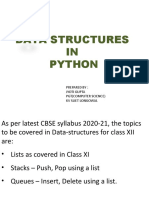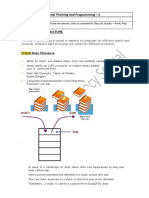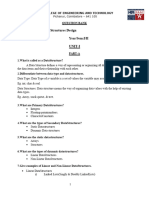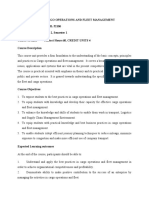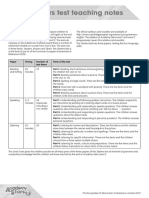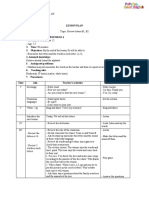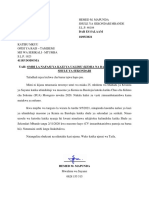0% found this document useful (0 votes)
33 views40 pagesCH 7 - Data Structures 2
Chapter 9 covers data structures, focusing on stacks and their operations such as searching, adding, deleting, and merging. It explains the differences between data types and data structures, classifying them into simple and complex types, and details linear lists and arrays. The chapter also discusses stack operations, including push and pop, and provides examples of user-defined functions for stack manipulation.
Uploaded by
Muskaan AroraCopyright
© © All Rights Reserved
We take content rights seriously. If you suspect this is your content, claim it here.
Available Formats
Download as PDF, TXT or read online on Scribd
0% found this document useful (0 votes)
33 views40 pagesCH 7 - Data Structures 2
Chapter 9 covers data structures, focusing on stacks and their operations such as searching, adding, deleting, and merging. It explains the differences between data types and data structures, classifying them into simple and complex types, and details linear lists and arrays. The chapter also discusses stack operations, including push and pop, and provides examples of user-defined functions for stack manipulation.
Uploaded by
Muskaan AroraCopyright
© © All Rights Reserved
We take content rights seriously. If you suspect this is your content, claim it here.
Available Formats
Download as PDF, TXT or read online on Scribd
/ 40



































